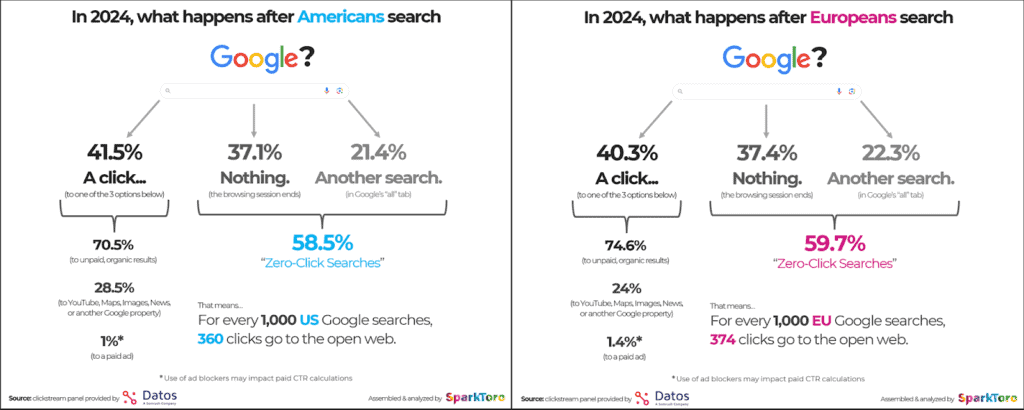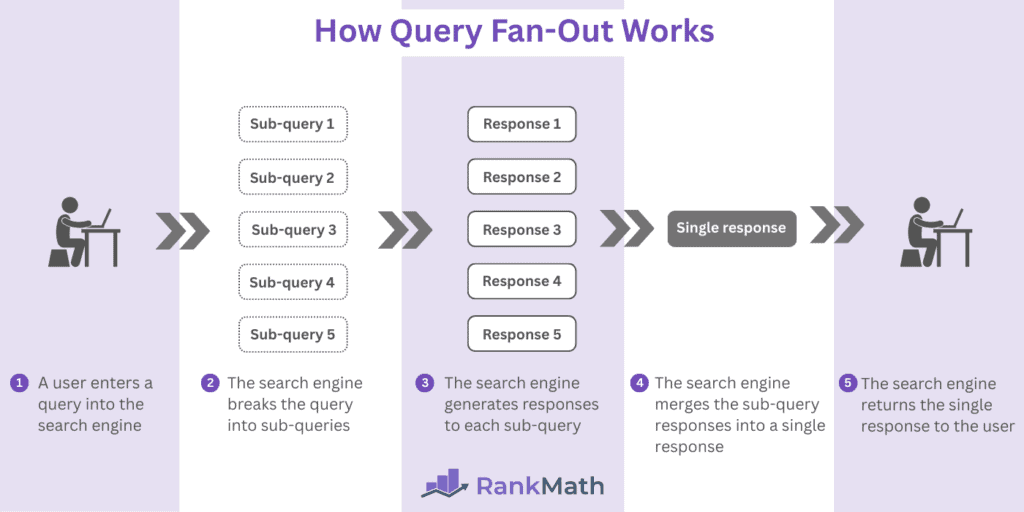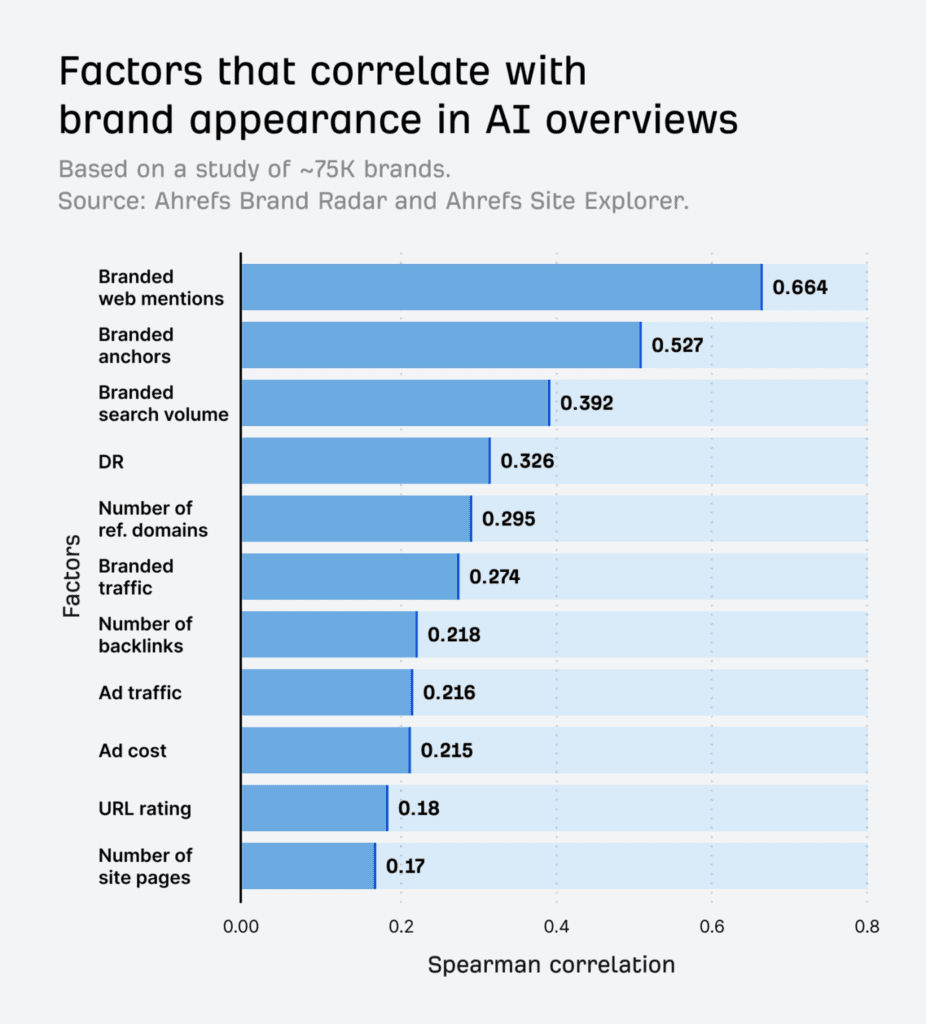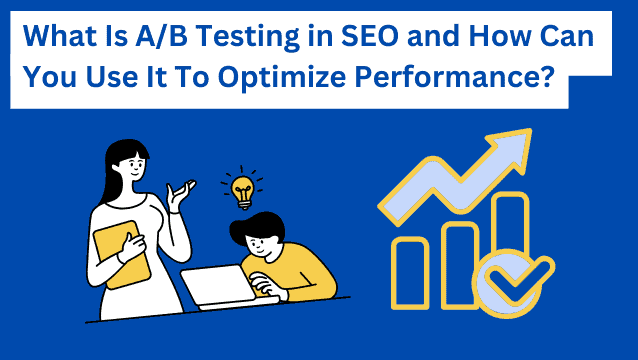I’ll be straight: the ground beneath the entire SEO industry has fundamentally shifted. For years, we played a game where the primary goal was to win a click from a list of blue links. The new game is all about winning a citation within a single, AI-generated answer. This new battleground is AI visibility, and it’s not a trend on the horizon—it’s the new reality of user acquisition.
AI models are rewriting the old rules, the ones that built countless businesses on the back of organic traffic. Companies that fail to adapt will become invisible. But for those who understand the new mechanics of this search landscape, an incredible opportunity awaits.
This post isn’t another high-level take on “AI in SEO;” it’s a data-backed playbook.
Based on new evidence from recent large AI citation studies, we’re going to dissect exactly how this new ecosystem works. We’ll then use that evidence to build a clear, actionable framework—the new C.A.T.S. model—to navigate it and win.
Highlights
- The search landscape has changed: AI Overviews now appear in over 10% of US search results, and their presence is correlated with a 34.5% drop in CTR for the #1 organic spot.
- Brand mentions > Backlinks: New data shows that for AI visibility, unlinked brand mentions have a 3:1 stronger correlation than traditional backlinks.
- It’s a multi-platform game: Google is the giant, but AI-native engines like Perplexity operate on entirely different rules, prioritizing third-party validation over on-site SEO.
- The C.A.T.S. Framework: A new, unified strategy for Generative Engine Optimization (GEO) focusing on Credibility, Atomicity, Topicality, and Syndication.
By the numbers: The rapid growth of AI overviews and other generative answer engines
The change is real. The shift in user behavior is already showing up in the data. While Google still dominates 90% the market, its share of search is decreasing.

But beyond that, the very nature of Google’s SERP is transforming thanks to AI Overviews (AIOs). At the same time, a new class of AI-native answer engines is experiencing explosive growth, creating a more fragmented and competitive landscape.
The data speaks for itself:
| Platform/Metric | Statistic |
| Google AI Overviews (AIOs)a | 156.7% increase in prevalence from September 2024 to March 2025 |
| ChatGPT Monthly Visitorsb | 5.8 billion (August 2025) |
| Grok (X AI) Monthly Visitorsc | 201.5 million (July 2025, average 135% monthly growth since January) |
| Perplexity Monthly Visitorsb | 148.2 million (August 2025) |
| Claude Monthly Visitorsb | 148.5 million (August 2025) |
Sources: aseoClarity; bSimilarweb; cSimilarweb
This isn’t just a change—it’s a sea change. A growing percentage of user journeys now start and end with an AI, making your AI visibility a critical performance metric.
What is AI visibility? Going beyond traditional SEO metrics
AI visibility is a measure of your brand’s presence as a trusted source within the content generated by AI models. It’s not about being on a list; it’s about being part of the answer.
In a way, AI visibility is to Generative Engine Optimization (GEO) what SERP rankings are for SEO. While some SEOs will say that GEO is just SEO with a different name, it’s not. That distinction is clearer today than ever before.
From a list of links to a single authoritative answer
Think of traditional Google as a librarian who, when you ask a question, hands you a curated list of ten books and lets you find the answer yourself. It’s effective, but it requires work on your part.
AI-powered search is more like a world-class research assistant. It reads all the books, synthesizes the key information, and gives you a direct, consolidated answer, complete with footnotes showing where it got the information. In this new world, your goal isn’t just to be one of the books on the shelf—it’s to be the source the assistant trusts enough to cite.
Understanding your brand as an entity
So, what does it mean to be a “trusted source” to an AI?
It starts with understanding that AI search engines see your brand not just as a website, but as an entity. An entity is a complete concept with associated attributes, relationships, and—most importantly—a perceived level of authority and sentiment.
A strong entity has a consistent brand description and brand positioning across the web. It means the AI can easily connect your:
- Media mentions
- Industry awards
- LinkedIn profile
- G2 reviews
- Website
- And more
A weak entity is disjointed. It presents conflicting information or a limited digital footprint. This makes it harder for an AI to verify its authority.
The CTR contraction effect and zero-click search: Why top rankings don’t guarantee traffic anymore
The most immediate and disruptive consequence of the AI-driven SERP is the “CTR Contraction Effect”. By providing a direct answer, AI Overviews reduce the need for users to click through to external websites.
The data is stark.
- In a 2024 study by SparkToro, Rand Fishkin reported that almost three out of five (58.5%) of US Google searches end with zero clicks. In Europe, the number increases to 59.7%.

- A landmark Ahrefs study found that AI Overviews in SERPs are partly to blame. The presence of AIOs is correlated with a 34.5% lower average CTR for the #1 organic result.
This isn’t a minor dip; it’s a fundamental change in the value of Google ranking.
This trend is the culmination of years moving toward “zero-click searches.” As Neil Patel puts it, “You can’t stop Google from serving up zero-click results. But you can adapt your SEO strategy to make the most out of the clicks available.” I would add that you should adopt a smart Answer Engine Optimization (AEO) framework to harvest clicks within the AI’s answer.
How Google’s AI Overviews actually work: The symbiotic relationship with SEO
The good news?
While the SERP is changing, the foundation of good SEO is more important than ever. Our research into how Google sources information for its AI Overviews reveals a deep, symbiotic relationship with its existing organic ranking system.
However, it’s nuanced.
The authority anchor: Why top 10 rankings are the price of entry
Multiple large-scale studies have shown that Google overwhelmingly trusts pages that already rank at the top of the SERP to build its AI responses. One comprehensive analysis by seoClarity found that a staggering 97% of AIOs cited at least one source from the top 20 organic results. The number one organic result was cited in 54% of cases.
The message is clear: the path to being featured in an AIO runs directly through traditional SEO. Factors like E-E-A-T, high-quality backlinks, and strong technical SEO aren’t just relevant; they are the price of entry.
“Diversity satellites”: The strategic opportunity in fan-out queries
While the top 10 results form the “Authority Anchor,” the story doesn’t end there. The data also shows that over half of citations come from pages ranking well beyond the first page.
This happens through what we call “fan-out queries.”

To build a comprehensive answer, Google’s AI often generates more specific, long-tail sub-queries to find supporting facts or diverse perspectives. This creates a massive opportunity for specialized sites that may not rank for a broad term but have the definitive answer for a niche sub-topic.
You can become a “diversity satellite” by creating highly structured, easily citable content that answers these granular questions better than anyone else.
The big reveal: Why brand mentions now outperform backlinks
As I shared on LinkedIn recently, one of the biggest assumptions in our industry was just shattered by a new Ahrefs study on brand correlation.
The decades-long era of “links are everything” as the unofficial mantra of SEO is over.
A shocking revelation: Unlinked mentions beat backlinks 3:1
The Ahrefs study analyzed 75,000 brands. It found that unlinked web mentions correlate 3X more strongly with AI Overview citations than backlinks do.

This completely flips traditional link-building strategy on its head. AI systems care more about whether people are talking about your brand than whether they are linking to it. This means raw Domain Rating and Domain Authority are becoming vanity metrics. Authentic brand mentions across the web are becoming the true signal of authority.
Adapting your link strategy for what AI models value
This new reality requires a new strategy. Here’s how we’re adapting our approach at uSERP to optimize for AI search visibility:
- Audit for topical relevance, not raw authority
- Target web mentions over link counts
- Diversify beyond the homepage
- Prioritize branded anchors
- Build for search volume, not for building links quickly
Beyond Google: How AI-native answer engines like Perplexity change the game
While Google adapts its existing search engine, a new class of “answer engines” like Perplexity is being built from the ground up for the AI era. These platforms operate on a fundamentally different logic, and winning on them requires a different playbook.
The Perplexity algorithm: A game of third-party validation
Perplexity’s algorithm is essentially a system of “credibility arbitrage.” Instead of calculating authority from scratch, it outsources its trust signals by heavily relying on third-party validation.

Research from First Page Sage reverse-engineered its algorithm and found that the weighting is skewed toward two main factors for general queries:
- Authoritative list mentions (64%): Perplexity trusts “best of” and “top 10” lists that already rank well on Google as a pre-vetted set of options.
- Online reviews (31%): The aggregate sentiment from review platforms like G2, Clutch, and Capterra is the second most important factor.
Awards, accreditations, and affiliations only account for 5%.
Optimizing for “overlap” and confidence, not just keywords
Qualitatively, Perplexity prefers content that is:
- Repeated across multiple independent sources (the “overlap” principle)
- Rich with concrete data points to quote
- Fast to parse
Overall, the AI visibility strategy here is less about on-page SEO and more about digital PR and reputation management. The goal is to get included in those key third-party listicles and encourage positive reviews, syndicating your key facts across the ecosystem to create the overlap signal the algorithm is designed to reward.
Building your AI visibility tracker: The essential AEO/GEO stack
You can’t improve what you don’t measure. As I laid out in another recent LinkedIn post, tracking your AI search performance requires a new set of tools designed for this new landscape.

A modern AI search visibility tracker goes beyond simple rank checking to provide deep insights into citations and volatility.
Monitoring volatility and the presence of AI responses
The first step is understanding the playing field. This is your early warning system.
Tools like Semrush Sensor are essential for monitoring SERP volatility. They flag how often AIOs and other generative features appear for your target keywords.
Mastering citation analysis to see what AI models trust
This is where the real intelligence lies. Platforms like Nozzle and seoClarity are built for the generative era. They log every citation, image, and link inside AI Overviews, allowing you to see exactly which sources LLMs trust. This information gives you a direct roadmap for your own content strategies.
Uncovering content gaps with entity and schema audits
Finally, ensure your content is technically optimized for machine consumption. A tool like Sitebulb can perform an “Entity Audit.” It crawls your site for schema gaps and missing markup. This technical foundation makes it easier for AI crawlers to parse your content and extract the key information they need.
The C.A.T.S. Framework: A unified strategy for Generative Engine Optimization (GEO)
So, how do we put all of this together? Based on a comprehensive analysis of all the latest data, we can synthesize these findings into a unified framework for GEO/AEO.
We call it the C.A.T.S. model. (Yeah, we love our acronyms 😏)

(Image provided by author)
C—Credibility: Building on-page authority and off-page consensus
Credibility is the foundation.
For Google, this means continuing to invest in traditional SEO signals like E-E-A-T and authoritative backlinks. But for the broader ecosystem, it means building off-page consensus through:
- Brand mentions in platforms like Reddit and Quora
- Inclusion in third-party listicles
- Media mentions, and
- Positive reviews
A—Atomicity: Engineering content for machine extraction
You must engineer content for machine consumption. This means breaking down complex topics into clear, concise, “atomic” units of information that are easy for an AI to extract. Use highly structured formats like:
- Logical heading hierarchy (H2s, H3s, H4s, etc.)
- Ordered and unordered lists
- Schema markup
- and tables
These structures make your key facts as parsable as possible.
T—Topicality: Achieving depth to answer complex questions
AI systems are designed to answer complex, multifaceted questions. To become a trusted source, you must demonstrate comprehensive topical authority by creating in-depth content that addresses a subject from every angle. This positions you perfectly to be the answer for both the primary query and the secondary “fan-out queries” the AI generates.
S—Syndication: Creating overlap and ecosystem presence
It’s no longer enough for your key brand messages to live only on your website. AI engines gain confidence when they see the same fact repeated across multiple, independent sources. An effective GEO strategy must involve actively syndicating your core facts and value propositions through digital PR, community engagement, and strategic partnerships.
While they all contribute, credibility and syndication are the most important factors in entity mapping. They help build your image as a trustworthy entity in the eyes of an AI.
The future is citable: Final thoughts from the CEO’s desk
The transition from a search landscape defined by clicks to one defined by citations is the single most important shift our industry has faced. The metrics that defined success for the last decade are becoming less relevant, and a new set of KPIs—like Share of Citation and the sentiment of your brand mentions—are taking their place.
This can feel daunting, but it’s also an incredible opportunity.
The C.A.T.S. framework provides a clear, data-backed blueprint for navigating this new terrain. By focusing on building holistic credibility, engineering content for atomicity, establishing deep topicality, and driving strategic syndication, you can position your brand to be the trusted source that both users and AI rely on.
The future of search is here, and it’s citable.
Ready to build a strategy that makes your brand the go-to source in the AI era? Explore how uSERP’s AI SEO services can build your authority and drive real results.


